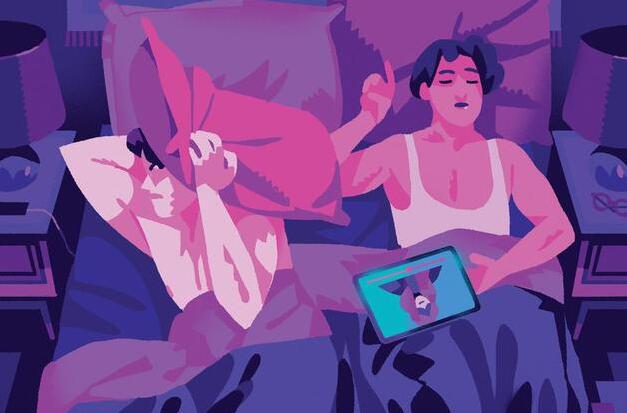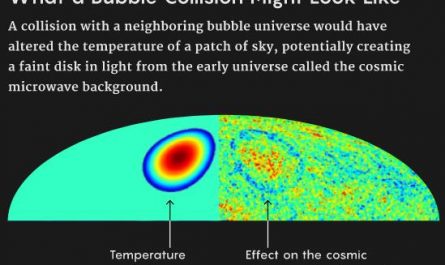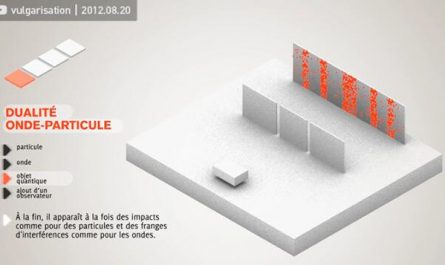Autonomous Sensory Meridian Response (ASMR) and Phonophonia are two seemingly opposites, but there may be many things in common.
Autonomous sensory meridian response is a new word used to describe perceptual phenomena, which is characterized by: the stimulation of sight, hearing, touch, smell or perception causes people to produce a kind of in the skull, scalp, back or other areas of the body. Unique and pleasant stimulus, but there is still a lot of controversy about the nature and classification of ASMR. This response will calm some people, but make others feel irritable.
For some people, finger shaking and soft sounds can trigger “brain tingling,” a pleasant scalp tingling that spreads comfortably throughout the body. However, other people will react negatively to the same finger shaking or soft voice. Their disgust stems from a mental illness called panophonia. Behaviors such as chewing and smacking can trigger an “acute stress response.” It is estimated that about 20% of the population is affected, and some people can’t even work or socialize normally (we don’t know how many people have experienced autonomous sensory meridian reactions).
These extreme auditory responses are phenomena that have not yet been studied and understood. Agneska Yannick Macselin, a senior lecturer in psychology at Bath Spa University in the United Kingdom, said that the study combines autonomous sensory meridian responses and panophonia. , May produce new insights into the mechanisms behind the two. Although these two reactions seem to be opposite (phobia means “sound hate” in Greek, and autonomous meridian response is described as “brain orgasm”), those that can bring disgust and inspire happiness There is no logical explanation for the noise.
In a video, a person casually eats pickles. Different viewers will have different reactions when watching the video. One viewer will feel calm when watching the video, while the other viewer may feel very irritable. If scientists can reveal Connecting the neural pathways between audio and happiness, they may bring the benefits of videos that produce autonomous sensory meridian responses to people who respond to numbness. In fact, when people watch videos that can produce autonomous sensory meridian responses, they will feel relaxed and quickly. Falling asleep can even cope with anxiety, depression and post-traumatic stress disorder.
Macsellin has always experienced the iconic tremor of the self-sensing meridian response, but did not seriously study this phenomenon until 2014. She is studying “common sense” (a kind of overlapping of different feelings that produces colorful music or strange names. When Weird Brain Perceives Consciousness), one of her subjects described another reaction to certain sounds-stinging. Macsellin searched hundreds of videos on YouTube that could stimulate autonomous sensory meridian responses, but did not find any related scientific research reports. She said: “I was very surprised at the time. Obviously, there are not many in-depth scientific analysis of the autonomous sensory meridian reaction.”
In order to understand the actual operation of the autonomous sensory meridian response, MacSelin began to investigate people with and without such stimulus responses, but it was difficult for her to find journals that published such research reports, partly because the anomaly was easily affected. Downplayed as a mathematical fashion, “self-sensing meridian response” is a term named by freelance writer Jennifer Allen.
It was not until 2015 that psychologists at Swansea University in the United Kingdom published the first paper report on autonomous sensory meridian response, and then Macselling published relevant research data in 2017. Both studies define autonomous sensory meridian response , And identified common triggers, including: whispering, finger tapping, and combing. To Macsellin’s surprise, she also found that some people with autonomous sensory meridian reactions are extremely disgusted and disgusted with certain sounds.
This reminds Macthelin of Phonophonia. In 2001, audiologists described this disease for the first time. Experts are still not sure what causes the disease, nor do they know how to better treat patients with Phonophonia, but Even a small part of the research data provided by Macsellin can obtain more reference materials than her in-depth study of autonomous sensory meridian reactions.
First, she chose the “phobia questionnaire”, which is a survey method developed by doctors at the University of South Florida in 2014. It can evaluate the patient’s symptoms and their severity, as well as special reactions caused by sounds. The questionnaire scores The higher the value, the more likely the subject will need professional treatment, such as cognitive behavioral therapy.
In a small study in 2018, Macsellin found that 36% of people who autonomously sense meridian reactions said they suffer from phobia. Some randomly selected control subjects were also confirmed to have autonomous sensory meridian reactions, and 70.8% of them met the diagnostic criteria for honophonia. She guessed that, for these people, the discomfort caused by some of the “most popular” noises might prevent them from looking for those pleasant sounds.
Small-scale research has provided key clues to the common source of these diseases. Both of these sensations can cause the body’s autonomic nervous system to respond, and the autonomic nervous system controls unconscious behaviors such as breathing. When people with homophonia hear certain sounds, their heart rate will increase, and when people with autonomous sensory meridian reactions are triggered by certain sounds, their heartbeat will slow down. Both groups of testers will experience sweating at their fingertips. Psychologists believe that this is a measure of the excitement of the nervous system. When people with honophonia are stimulated, it is a manifestation of discomfort; people who feel the meridian response autonomously feel A certain degree of stimulation indicates that you are in a state of excitement.
People who respond strongly to sounds, whether they show affection or dislike, have certain differences in their brain structure. People who are sensitive to the howling effect have a prefrontal cortex (the brain area involved in rapid decision-making) than normal People have more myelin (the substance can insulate neurons and speed up the spread of information).
Jennifer Blott, a psychologist who is engaged in the research on Phonophonia counseling, said that this may be the response of people to the triggering factor changing from 0 degrees to 60 degrees. A rustle or a slap is a threat. In contrast, brain scans have found that autonomous sensory meridian responses are related to changes in connections between different areas of the brain, which may hinder people’s ability to control emotional responses to such stimuli.
The gray matter of the brain of people with honophonia may also distort reality. The human brain constantly evaluates the internal state of the body. This is a kind of “sixth sense” called internal perception consciousness. However, when the sixth sense is wrong, It is like an interesting mirror, distorting people’s perception of their body. The wrong sixth sense is related to many mental health problems, such as eating disorders and obsessive-compulsive disorder. Experts such as Blott speculate that phobia may cause hyperactivity in the gray matter areas of the patient’s brain, causing the patient to enter a painful feedback loop.
In this circuit, mildly uncomfortable physical symptoms, such as increased heart rate, will change as people begin to pay attention to these symptoms and become more anxious. Researchers are studying similar associations of autonomous sensory meridian responses. In this association, increased awareness may increase the level of body tremors that are typical of people with panophonia.
These primary brain scans and investigations are just the first whispers of a long and complex conversation about love, hate, and speech. The psychologist next hopes to reveal some problems that may help us calm down. YouTube users hope that scientists will pay more attention to the role of non-auditory triggers in the tingling sensation, such as hand movements. MacSelin is trying to understand how the self-sensing meridian response changes oxytocin and other stress-reducing hormones. Blott believes that related research may alleviate the pain of patients with panophonia.
It is reported that at least one of her patients is keen to watch videos about autonomous sensory meridian reactions, which will help her relieve the symptoms of panophonia. Self-sensing meridian response, a term that began in the field of Internet consciousness can help us reveal the deep truth about the way we experience sound, and perhaps help each of us build a healthier worldview.






